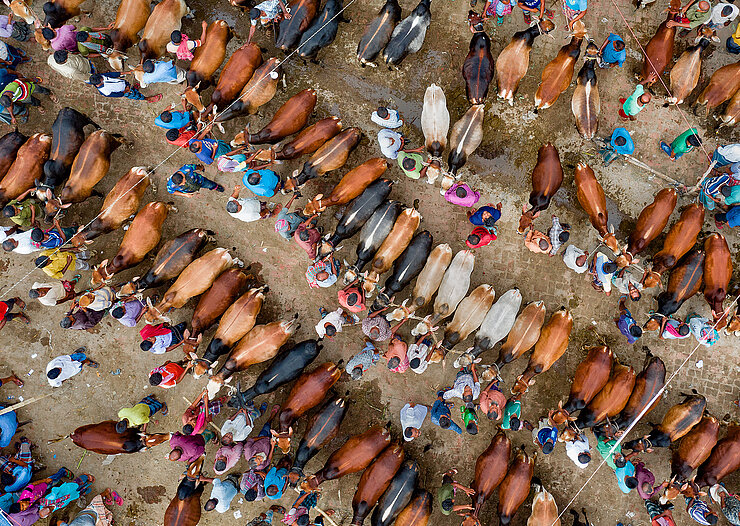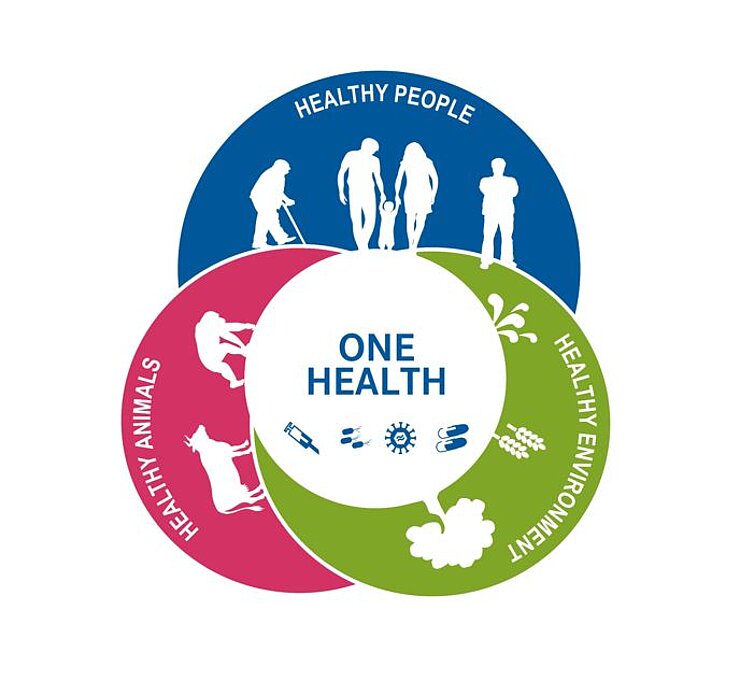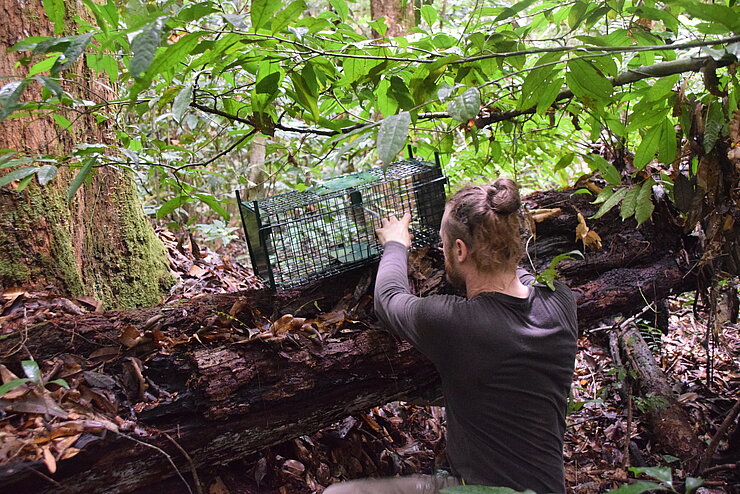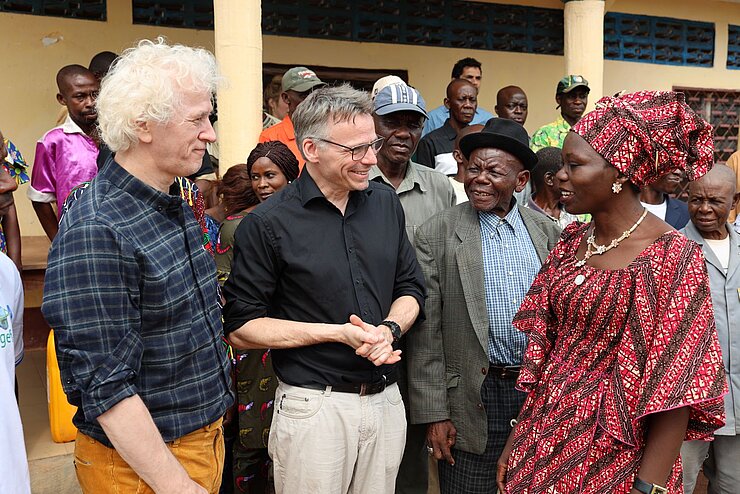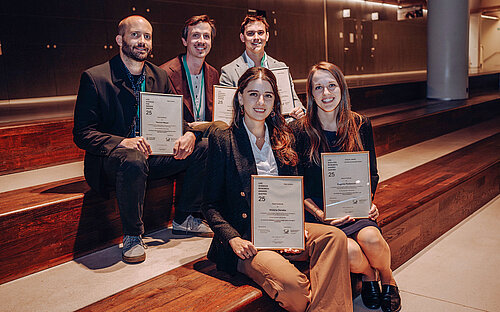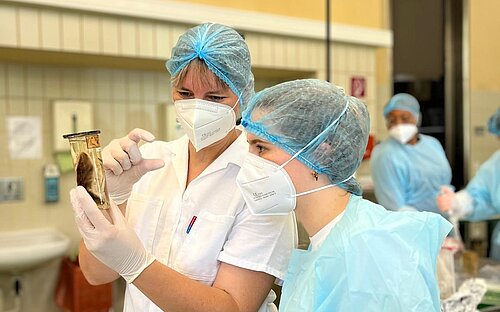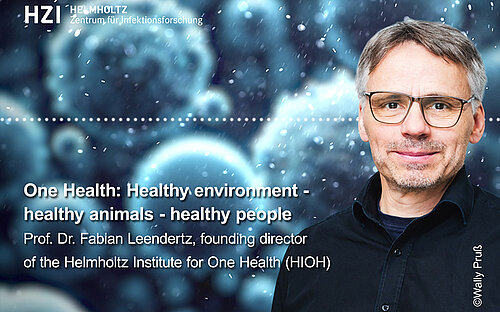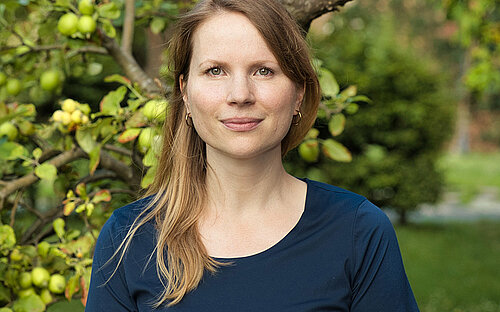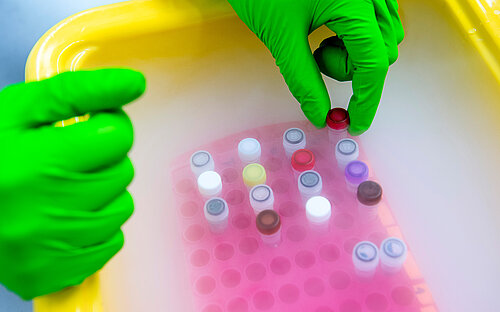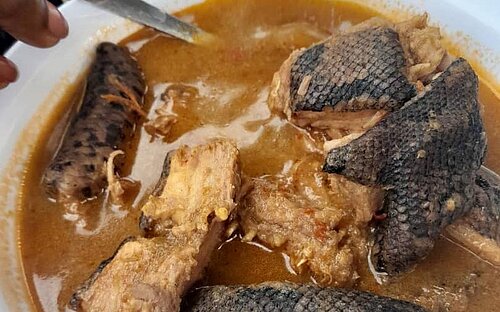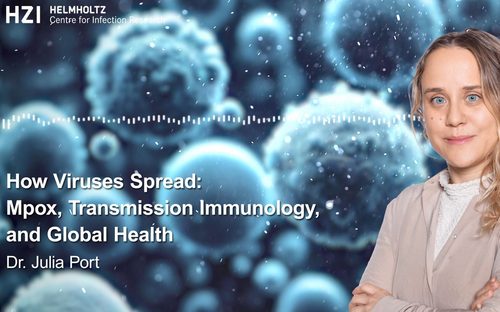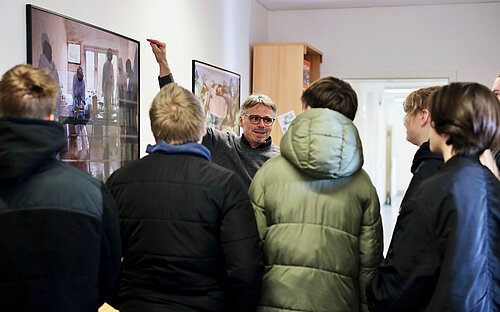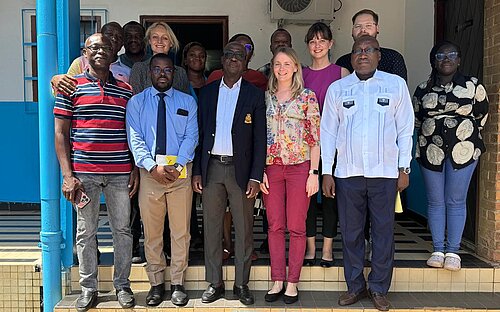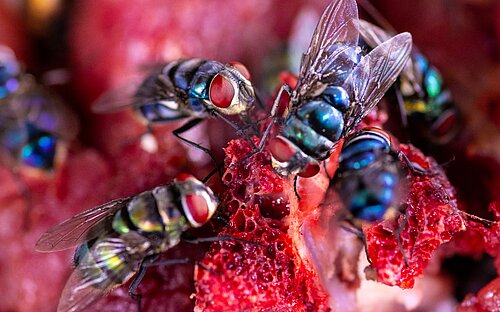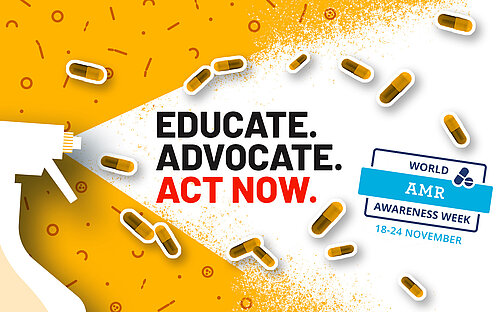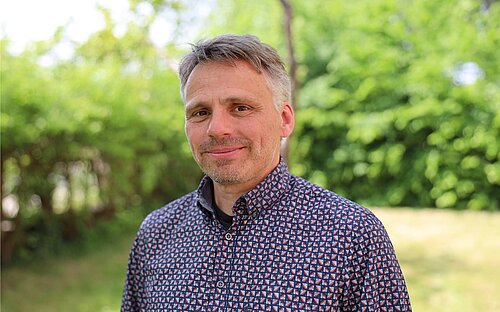One Health
The Triad of Environmental, Animal and Human Health
Infectious diseases have always posed a threat to human health. But perhaps never more than today? “That is a difficult question to answer. But there is a whole range of risk factors that favour infections with previously unknown pathogens and make them more likely to spread today,“ says Prof Fabian Leendertz, the founding director of the Helmholtz Institute for One Health (HIOH) and head of the department “Ecology and Emergence of Zoonoses”. Increasing human encroachment into wildlife habitats, loss of biodiversity, ongoing climate change and globalisation all play an important role here.
Leap between animals and humans
The transmission of pathogens from animals to humans is called zoonosis. There are numerous recent examples of this: Like the SARS-CoV-2 virus, the pathogen of COVID-19, which presumably leaped to humans via a bat. And the MPXV virus (monkeypox virus), the causative agent of mpox (formerly monkeypox), which caused an outbreak with around 100,000 cases in more than 100 countries from 2022. "Zoonoses are always volatile and can have far-reaching consequences. In fact, most of the infectious diseases we deal with today have a zoonotic origin," Leendertz explains. For example, one of the oldest known zoonoses is the transmission of the measles virus from cattle to humans around 500 BC, as suggested by new genetic mutation analyses of measles viruses. Once a pathogen has found a new host, i.e. humans, that ensures its further spread, it is usually there to stay. “Sometimes it takes only a single transmission event for this to happen. In the worst case, an infection scenario can develop so rapidly due to globalisation that it can become a world-wide pandemic. Which is what we have seen with the Corona pandemic.”
However, zoonoses can also take the opposite route: Great apes are susceptible to various human cold viruses that can be transmitted by tourists, for example. The animals have no immunity to the pathogens and often fall seriously ill or even die from them. But pathogens can also be transmitted to species that are less closely related to us. For example, large parts of the deer population in North America have been infected with SARS-CoV-2 within just a few years.
What One Health means
But under what conditions do pathogens make the leap between animals and humans in the first place? And how can it be prevented? These are precisely the questions addressed by the One Health research approach. Based on the triad of healthy environment, healthy animals, healthy humans. "The key point is: We cannot look at human health in isolation. It is closely intertwined with the environment and the animal world, everything is interrelated," says Leendertz. “If we preserve a healthy environment, or try to restore it as best we can, we can ensure that animals stay as healthy as possible and protect human health at the same time.”
But any disturbance has an impact on the system as a whole. Intensive land use and climate change throw ecosystems out of balance, leading to changes in the communities of species and weakened wildlife populations - thereby providing ideal conditions for pathogens. "Specifically regions with very high natural biodiversity, such as the tropics, also have a high diversity of microorganisms and that includes pathogens," Leendertz explains. "And they can spread quite readily if the biodiversity decreases and individual species multiply massively. Mostly these are so-called synanthropic species, which have been able to adapt well to the landscape changes made by humans." In addition, humans are encroaching more and more on wild animal habitats, for example to gain new land for agricultural use or the mining of raw materials. This, in turn, increases the likelihood of human-animal contact along with the risk of transmission. "Human behaviour also plays an important role," says Leendertz. "Game hunting has changed a lot in the tropics. It used to be common to hunt antelopes, monkeys, pigs or other large game. Since many of these species are locally extinct or severely depleted, people are starting to hunt smaller species as well. For example, larger rodents or fruit bats - and this increases the risk enormously of coming into contact with new, possibly dangerous pathogens."
Interdisciplinary Research at the HIOH
One Health calls for a holistic approach, which the scientists at the HIOH pursue together with their partners: the University of Greifswald, the Greifswald University Medicine and the Friedrich-Loeffler-Institut (Federal Research Institute for Animal Health) - and in close cooperation with their colleagues at the HZI. A wide variety of disciplines is joining forces in the research projects: human and veterinary medicine, microbiology, virology, epidemiology, drug research, biodiversity research, ecology, evolutionary biology, anthropology and sociology.
The key point is: We cannot look at human health in isolation. It is closely intertwined with the environment and the animal world, everything is interrelated.
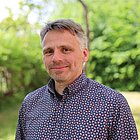
How One Health can help
The major goal pursued by One Health is prevention and preparedness for future pandemics. For that, we need to know exactly where the dangers lie. Which pathogens are we dealing with? How do they change over time? Which animals are potential vectors? Where and how can transmissions take place? "We want to get to the bottom of these questions so that reasonable preventive measures can be taken and implemented efficiently," says Leendertz. This includes environmental protection, establishing food security, improving medical care, educating the local population on where possible risks of infection lie and advising them on how to manage them. "At the same time, of course, we have to prepare for an emergency: constantly monitoring dangerous candidate pathogens, tracking down as-of-yet unknown pathogens, advancing vaccine and drug research and addressing the issue of resistance. All this is also part of One Health," says Leendertz.
The environment, animals and humans always resonate together, just like the notes in a triad. Fabian Leendertz and his HIOH team are propelling One Health research at full tilt to identify dissonances as early as possible and resolve them optimally - for healthy coexistence of the environment, animals and humans.
Author: Nicole Silbermann
Involved research groups
-
Epidemiology and ecology of antimicrobial resistance
 Prof Dr Katharina Schaufler
Prof Dr Katharina Schaufler -
Pathogen Evolution
 Prof Dr Sébastien Calvignac-Spencer
Prof Dr Sébastien Calvignac-Spencer -
Evolutionary Community Ecology
 Dr Jan Frederik Gogarten
Dr Jan Frederik Gogarten -
Laboratory for Virus-Host Co-Evolution
 Dr Max Kellner
Dr Max Kellner -
Ecology and Emergence of Zoonotic Diseases
 Prof Dr Fabian Leendertz
Prof Dr Fabian Leendertz -
One Health Surveillance
 Dr Fee Zimmermann
Dr Fee Zimmermann
